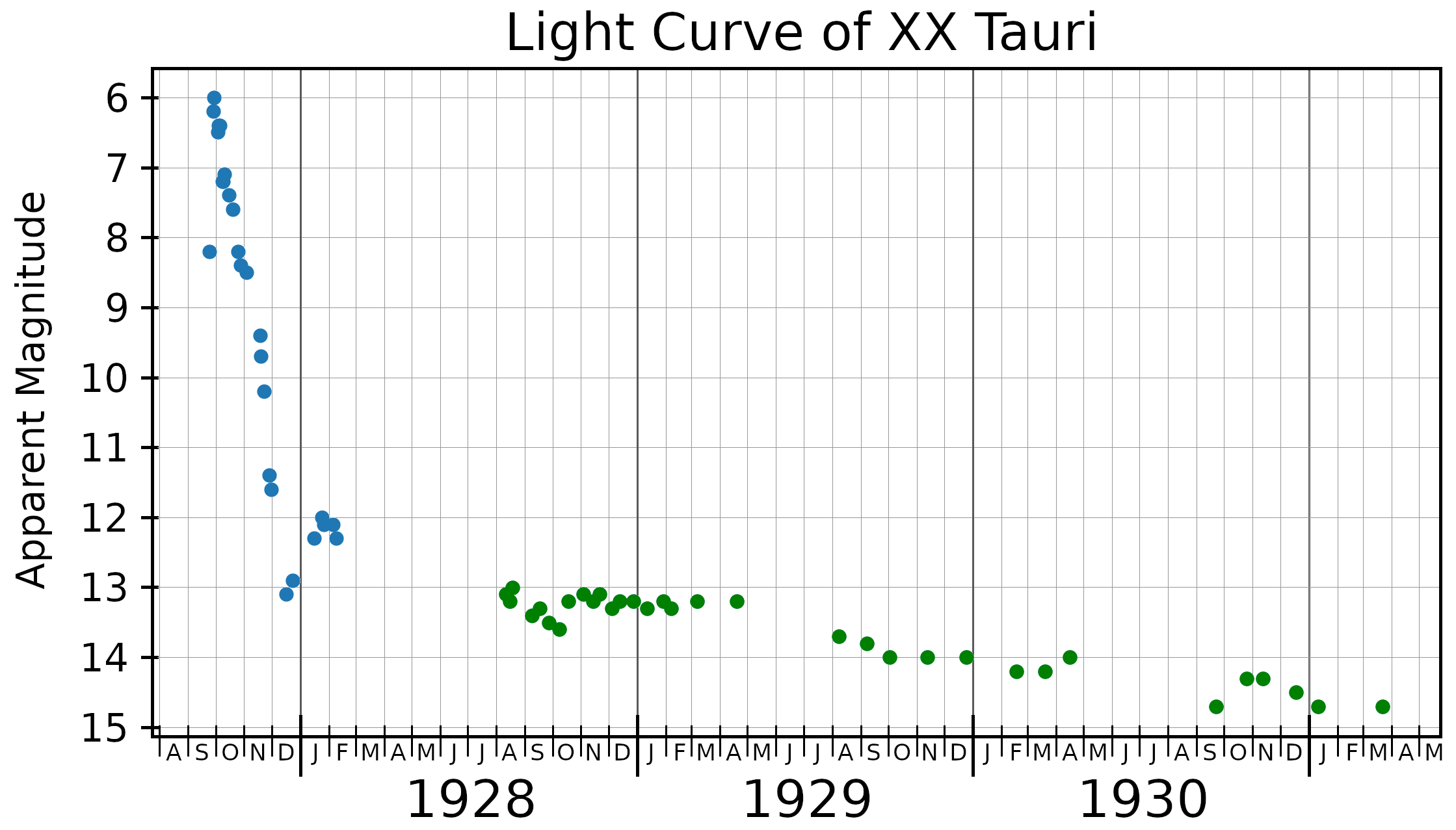XX Tauri on:
[Wikipedia]
[Google]
[Amazon]
 XX Tauri (Nova Tauri 1927) was a nova, which appeared in the constellation
XX Tauri (Nova Tauri 1927) was a nova, which appeared in the constellation
 XX Tauri (Nova Tauri 1927) was a nova, which appeared in the constellation
XX Tauri (Nova Tauri 1927) was a nova, which appeared in the constellation Taurus
Taurus is Latin for 'bull' and may refer to:
* Taurus (astrology), the astrological sign
* Taurus (constellation), one of the constellations of the zodiac
* Taurus (mythology), one of two Greek mythological characters named Taurus
* '' Bos tauru ...
in 1927. It was discovered by Arnold Schwassmann
Friedrich Karl Arnold Schwassmann (25 March 1870 – 19 January 1964) was a German astronomer and a discoverer of 22 minor planets and 4 comets, who worked at AOP in Potsdam and at Bergedorf Observatory in Hamburg.
He was co-discoverer with Ar ...
and Arno Arthur Wachmann
Arno Arthur Wachmann (8 March 1902 – 24 July 1990) was a German astronomer and discoverer of comets and minor planets, who worked for many years at the Bergedorf Observatory in Hamburg.Hamburg Observatory
Hamburg Observatory (german: Hamburger Sternwarte) is an astronomical observatory located in the Bergedorf borough of the city of Hamburg in northern Germany. It is owned and operated by the University of Hamburg, Germany since 1968, although i ...
on an objective prism
Slitless spectroscopy is astronomical spectroscopy done without a small slit to allow only light from a small region to be diffracted. It works best in sparsely populated fields, as it spreads each point source out into its spectrum, and crowded f ...
photographic plate taken on 18 November 1927. Subsequent examination of pre-discovery photographic plates taken at the Harvard College Observatory
The Harvard College Observatory (HCO) is an institution managing a complex of buildings and multiple instruments used for astronomical research by the Harvard University Department of Astronomy. It is located in Cambridge, Massachusetts, United St ...
showed that the peak brightness, magnitude
Magnitude may refer to:
Mathematics
*Euclidean vector, a quantity defined by both its magnitude and its direction
*Magnitude (mathematics), the relative size of an object
*Norm (mathematics), a term for the size or length of a vector
*Order of ...
5.9, occurred on 1 October 1927, at which point it may have been faintly visible to the naked eye. By 1988 it had faded below magnitude 19.8.
XX Tauri faded three magnitudes from peak brightness in just 43 days, making it a "fast nova". Its post eruption light curve shows small amplitude (~0.1 magnitude) variations of timescales of days, hours and minutes, which makes the determination of the orbital period of the binary system comprising the nova difficult. The orbital period may be 0.136±0.002 days.
In 1984 a small (radius 2.2 arc second) nova remnant
A nova remnant is made up of the material either left behind by a sudden explosive fusion eruption by classical novae, or from multiple ejections by recurrent novae. Over their short lifetimes, nova shells show expansion velocities of around 1000& ...
surrounding XX Tau was discovered using the Hale Telescope
The Hale Telescope is a , 3.3 reflecting telescope at the Palomar Observatory in San Diego County, California, US, named after astronomer George Ellery Hale. With funding from the Rockefeller Foundation in 1928, he orchestrated the planning, de ...
. The expansion of that remnant has been used to derive a distance estimate of 3500 parsec
The parsec (symbol: pc) is a unit of length used to measure the large distances to astronomical objects outside the Solar System, approximately equal to or (au), i.e. . The parsec unit is obtained by the use of parallax and trigonometry, an ...
s.
References
{{DEFAULTSORT:XX Tauri Novae Taurus (constellation) 1927 in science Tauri, XX